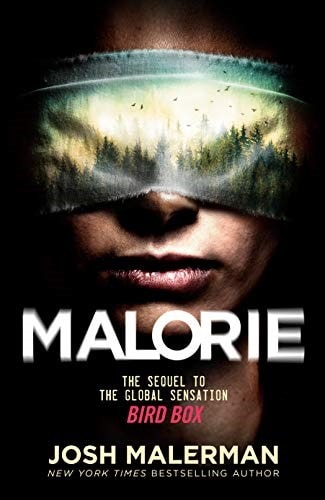I’ve heard a lot of nice and good things about Josh Malerman’s first novel, but, of course, only in the sense that a terribly tense and often brutal, post-apocalyptic horror story full of cruelty can be called “nice and good”. At several places, the book has been referred to as the most original and most ghoulish horror story of recent times, so it is no wonder that a studio swiftly snatched the film rights. Having read the novel, I, too, feel that it is a very powerful work that consistently pursues its novel, well-thought-out basic idea and is able to make a deep impression on its reader with its particularly lean, piercing style. However, I felt the work was a little imperfect in one or two segments, and this doesn’t make it possible for me to give it a really high score (above 9) with a pure heart, and thus acknowledge it as a dazzling masterpiece.
The story of the novel is based on the appearance on Earth of incomprehensible creatures, catching sight of whom immediately drives people crazy.
People who have thus lost their minds are a mortal danger both to those around them and to themselves. Humanity is powerless against the “unexperiencable” creatures, there is no other solution but seclusion. Those few who survive the wave of violence and chaos caused by the appearance of those creatures are forced to lay, low blindfolded, isolated from the sight of the outside world. This is also what the heroine of the novel, Malorie, does, who, at the beginning of the story, has been languishing in a barricaded house with her two young children for four years. On a foggy day, Malorie decides to sail – essentially blind – with the two little ones somewhere where they might be safer.
As the story suggests, Malerman works on the basis of the classic Lovecraft heritage when he places entities beyond people’s comprehension in the focal point of his unique apocalypse – which could even be the Great Old Ones. It also rhymes with the fact that, like in Lovecraft’s novels, the horror factor is primarily intimation and fear of the unknown here. The author thought carefully about how to make the most of the tension arising from the proximity of incomprehensible monsters and exploits the magic trick of “Whatever happens, don’t open your eyes or you’ll go crazy” to the extreme.
This solution has two positive and one negative effects: on the one hand, it constantly nags the reader’s imagination as to what these mysterious horrors might be like; on the other hand, the illusion-breaking event that getting to know the monster may relieve tension cannot happen here (as this knowledge would mean the death of the protagonist); on the other hand, however, the fact that the reader’s curiosity remains unsatisfied in the long run results in a rather frustrating feeling. In my humble opinion, this latter hitch could have been avoided, for example, by relying on the kind of solution Jeff VanderMeer employed in his science fiction horror of special atmosphere Expedition. With VanderMeer, though one could get a glimpse of the incomprehensible creature, human senses and the brain failed spectacularly while comprehending the maddening spectacle.
Malerman did not utilise this opportunity… As to how he solved the problem, I do not wish to ruin it, everyone should read the book, and a SPOILER alert in the comments can be provided as a warning to indicate whether or not you liked the way the author treated the identity of the monsters.
The novel, by the way, suffers from very few weaknesses.
One of these negative aspects is that it feels a little shallow from the point of view of the characters. With the exception of the protagonist Malorie, the eternal optimist Tom, and the honeymooning stranger Gary, the characters have very few unique characteristics, their distinguishing marks are only slightly indicated instead; for example, the two young children do not have any childish (or other) characteristics. Another weakness for me was the big chance in the story that the writer missed: By seriously questioning Malorie’s common sense, the story could have been given whole new dimensions but, unfortunately, Malerman did not consider this option.
Now that we have covered the – not too pronounced – negative aspects of the book, let’s see the lot more massive positive side. I’ve already mentioned the unique flavour of the post-apocalyptic basic idea and the writer’s incredibly effective technique of creating tension. It is not possible to avoid mentioning the professional editing of the work – the reader is made to learn, with increasing intensity, about Malorie’s present and his agonizingly tragic past in parallel.
In addition, I must emphasize Malorie’s special relationship as a mother to her children, its demonstration (in order to survive, maternal love mutates into tyrannical command), as well as the occasional cruel naturalism of the story (an example: for most of the actual plot, our heroine dabbles in the water, blood, urine and vomit gathered at the bottom of her boat). Another important upside is the author’s unvarnished, strict style, which is right to the point, so to say, and also the analysis of the psychological aspects of self-isolation, withdrawal from the world, and opening to the world.
What is undoubtedly an enormous experience in the book is the terribly tense and intense finale filled with horrors and excitement, running parallel in the past and the present, which is a truly masterful, horrifying climax. Even if it’s not necessarily the best horror book in the world, it certainly reveals one of the most shocking births in world literature.


Recent Comments